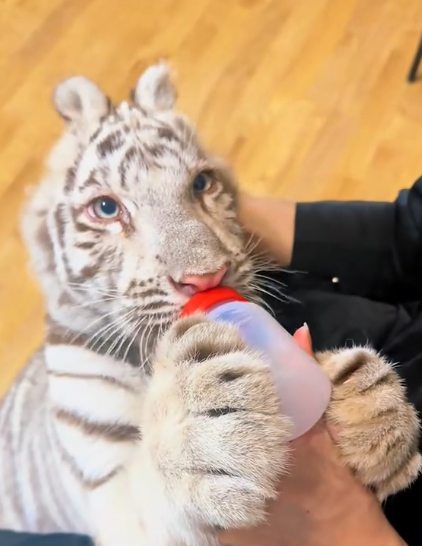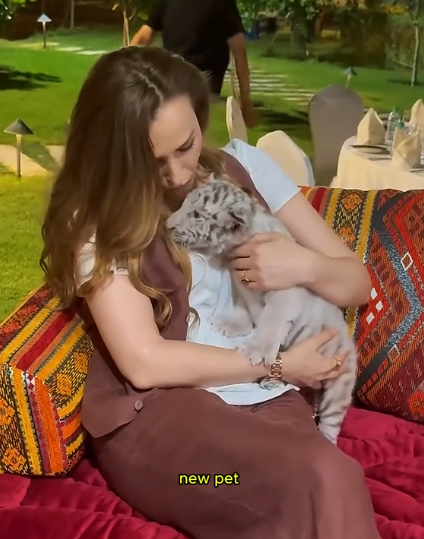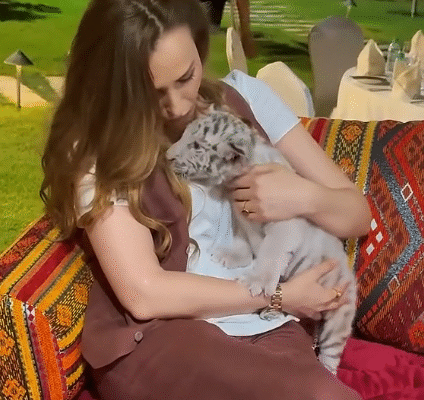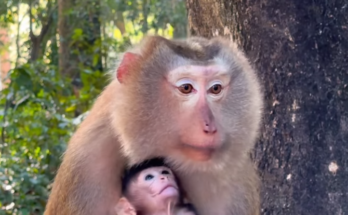
From the moment I saw her, I knew my life was about to change forever. The white tiger cub lay curled up in a small cage, her fur pure as freshly fallen snow, her blue eyes wide with curiosity and something deeper — a hint of loneliness that tugged at my heart. I never imagined that one day, this wild, majestic creature would become my pet. But life has a way of surprising us, and this is the story of how I adopted and raised a white tiger cub in my own home.
The Beginning
It all started when I volunteered at a wildlife rescue center on the outskirts of the city. The center was a sanctuary for animals confiscated from illegal traders or those injured in the wild. One afternoon, the director called me over with urgency in his voice.
“There’s a white tiger cub, barely two months old, brought in today. Her mother was caught in a poacher’s trap, and the cub was found wandering alone in the forest. She’s going to need constant care.”
I didn’t hesitate. I had grown up loving animals, but this was a responsibility unlike any I had ever imagined. A tiger is no ordinary pet. It’s a creature of power and grace, born to roam free across vast wilderness. But this cub, whom I named Luna, had no choice. She was orphaned, and if no one cared for her, she would surely perish.
The Challenges
Bringing Luna home was like entering a different world. I had to prepare everything carefully: a large enclosure with thick reinforced fences, plenty of space for her to run, climb, and explore safely. I consulted veterinarians and animal behaviorists to understand her needs. White tigers, like all tigers, require a diet rich in protein — fresh meat, bones for calcium, and vitamins to mimic what she would get in the wild.
At first, Luna was scared and fragile. She would tremble when I approached, but I spoke softly, moving slowly so she wouldn’t feel threatened. Every day, I fed her milk from a bottle, warmed just right, and gradually introduced chunks of chicken and beef.
Her eyes watched me with a mix of caution and trust, and little by little, she began to respond to my presence. We developed a rhythm — feeding, playing, resting. Luna learned that I was not a threat but a friend.

Growing Together
As weeks turned into months, Luna grew rapidly. Her legs became strong, her paws enormous, tipped with sharp claws that I had to trim carefully to keep her safe around the house. She loved to chase balls and pounce on ropes I dangled for her. Her playful growls echoed through the yard, reminding me she was still a wild animal at heart.
Despite her growing size, Luna never lost the kitten-like curiosity. She would nuzzle my hand, purr softly — though it was more of a rumble — and sometimes nudge me with her head as if to say, “Thank you for saving me.”
Training a white tiger is not like training a dog. It requires patience, respect, and understanding her instincts. I worked with professional trainers who taught me how to communicate with Luna using body language and commands. Positive reinforcement was key — treats and praise when she responded well.
The Bond
What amazed me most was the bond we formed. Luna was no longer just a pet; she was family. She followed me around the house, curled up beside me on the couch (carefully, because even at six months, she weighed over 70 kilograms), and greeted me every morning with a soft chuffing sound — a tiger’s way of showing affection.
But living with a white tiger also meant constant vigilance. I had to secure the house, keep her enclosure clean and enriched with toys and climbing structures to prevent boredom. The responsibility weighed heavily, but the reward was a companion like no other.
People often asked me, “Isn’t it dangerous? Why keep a tiger as a pet?” The truth is, it’s not about domination or ownership. It’s about rescue, respect, and love. Luna was never meant to be caged forever, but until she could survive in the wild, I was her guardian.
The Difficult Decisions
One of the hardest moments came when Luna reached her first birthday. By then, she weighed over 100 kilograms and was far too big to live inside the house safely. I had to move her to a much larger sanctuary facility, specially designed for big cats, where she could run and swim freely under expert care.
Saying goodbye was heart-wrenching. Luna had grown to trust me completely, and the thought of not seeing her every day was painful. But I knew it was the right thing. A white tiger belongs in the wild or in a sanctuary that simulates natural conditions, not in a backyard.
Still, I visit her regularly. Watching Luna roam through tall grass, stretch under the sun, and hear her roar — a deep, powerful sound that fills the air — I know she is happy and healthy. And I take pride in knowing I gave her a second chance at life.

Lessons Learned
Having a white tiger as a pet taught me invaluable lessons about responsibility, patience, and compassion. These animals are not toys or status symbols. They are living beings with needs, fears, and feelings. Their survival depends not just on physical care, but on understanding their nature and respecting their wild spirit.
I also became an advocate for wildlife conservation. The plight of white tigers is dire — they are endangered due to habitat loss, poaching, and illegal pet trade. Every tiger cub saved and cared for is a victory against extinction.
Final Thoughts
If you ever dream of having an extraordinary pet, remember Luna’s story. It is one of hope, resilience, and an unbreakable bond between human and wild animal. A white tiger pet is not just a companion — it’s a life-changing journey that demands your heart, your time, and your soul.
And in return, it gives you a friendship as fierce and pure as the tiger’s own spirit.



